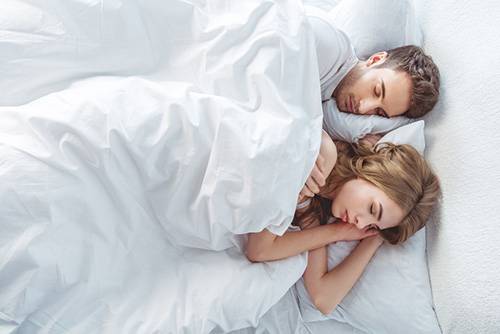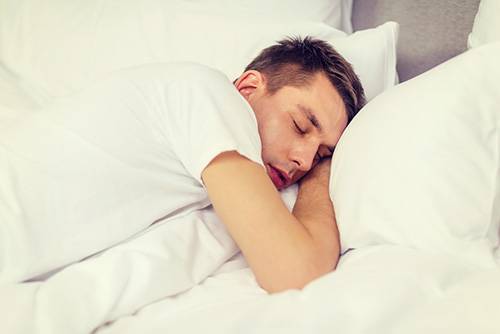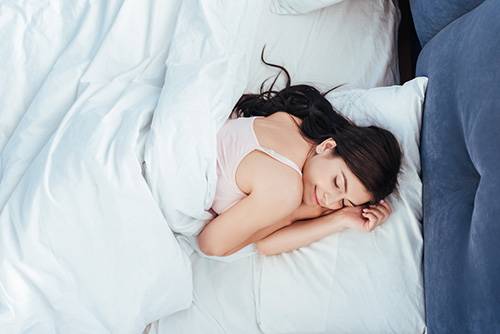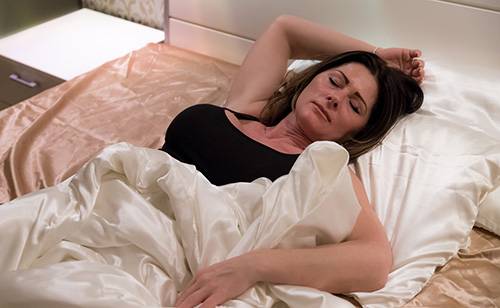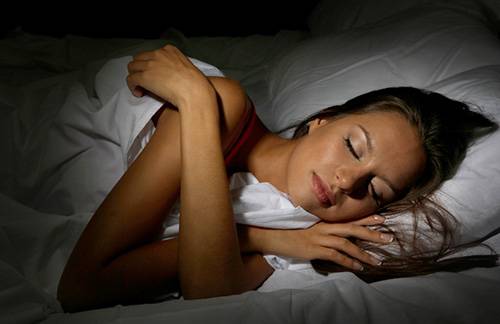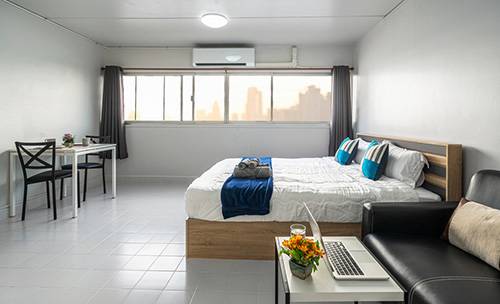You may have noticed that nights always tend to feel cooler than days, regardless of the time of year. There are two reasons for this; one being that the sun is no longer present and radiating heat on this side of the earth and two, your body naturally cools down when you’re ready to go to bed. This occurrence is part of a process called thermoregulation.
What is Thermoregulation?
Thermoregulation, as simply put as can be, is the process that permits your body to regulate your body’s internal temperature. This regulation ensures that your body remains near the state of equilibrium, your homeostasis.
Your body temperature cannot stray too far from this temperature without getting ill. The acceptable temperature range for the human body is between 98 to 100 degrees Fahrenheit.
If you reach 95 degrees, it’s considered a state of hypothermia. If you reach the critical level of 107.6 degrees, then there is the immediate threat of brain damage or even death. Keep in mind, this is the body’s core temperature, not just what temperature your mouth or skin is.
Thermoregulation is controlled by the brain, more specifically the hypothalamus. Your brain is constantly reading the body’s temperature and sending signals to either cool you down or warm you up. Your internal body heat is generated with your metabolism to keep you comfortable over the temperature of your surroundings.
How Does Your Body Cool Down?
When your body needs to cool itself down, there are two processes it could go through:
- Your body could begin to generate sweat. Your sweat glands, once directed by the brain, will release sweat over your skin. This will cool it down while sweat evaporates to help cool down your internal temperature.
- The second process your body could go through is vasodilatation. When this happens, the blood vessels underneath your skin widen, which increases your blood flow. The blood will flow to wherever it is cooler, dispersing the heat in your body with heat radiation.
How Does Your Body Warm Up?
When warming up, your body has three different approaches.
- Vasoconstriction is the reverse process of vasodilatation. Rather than your blood vessels getting wider, they constrict and become narrower. This traps the heat within your body, preventing it from escaping and keeping you warm internally.
- Thermogenesis is another approach your body takes to warm you up. This happens somewhat naturally once the brain detects that you’re feeling cold. The muscles and organs of the body begin to shiver, creating small waves of friction that warm you up internally.
- Hormonal Thermogenesis is another instinct of the body in which your brain initiates a hormonal reaction to the cold. Your thyroid glands release hormones to increase your metabolism levels, thus increasing your energy levels and making substantial amounts of heat.
Thermoregulation’s Relation to Sleep
Thermoregulation happens all the time within your body to keep you at a comfortable temperature level. Without it, you wouldn’t be able to survive in climates unless they were the perfect temperature your body required, which is 98 to 100 degrees Fahrenheit.
Thermoregulation is also naturally present while you sleep, though it’s more present and required throughout the night while you’re idle.
You can view thermoregulatory behavior while you get ready for bed. You begin to tuck yourself underneath the covers and curl up into a position that is comfortable and either traps heat or is more breathable. Whatever your body temperature demands, you automatically change according to it. Turning the pillow to the colder side or taking an extra blanket during winter; this is you keeping your internal temperature moderate.
The summertime will call for fewer layers and perhaps more breathable clothes while the winter will require thicker clothes, blankets, and covers. You may also notice you spread your limbs much more in the summer, while you cuddle up and tighten your position when it’s winter.
Why Do We Have to Sleep Cold?
There has been much research done to finally confirm a concrete fact about our bodies; we have to cool down before going to bed. The body does this automatically, cooling the internal temperature down alongside the release of melatonin at least an hour before you sleep.
Staying cool while you sleep is an important component of a healthier night’s rest. The cooler you are, the more comfortable you are. Sleeping hot could ruin your sleep, making you wake up constantly or create rashes and dry skin in the morning.
The question is, however, why do you need to sleep cold? There is some evidence that your body actually cools itself down in order to conserve energy and avoid potential biophysical disorders from being active throughout the day.
While you enter NREM (Non-rapid eye movement) sleep, your body cools down. This is because your limbs and muscles are slowly winding down, almost to a state of complete paralysis to prevent you from moving around.
Why Do You Get Hot at Night?
Your body has to cool down when you sleep for a more comfortable and beneficial rest. This means that excess heat is released to achieve the desired temperature.
Here, your body radiates heat to internally cool you down most likely through the process of vasodilatation. This heat can then get trapped inside of your bedding such as the mattress, pillows, and sheets if there is no proper ventilation.
This is a very prominent issue with materials such as foam and memory foam. They do not ventilate, rather trap heat and this can lead to you sleeping warm.
To avoid this, it’s better to invest in thermal regulating bedding, such as latex, innerspring, or gel-infused memory foam. For covers, materials such as cotton and bamboo have a tendency to sleep much cooler and be more breathable than other materials.
Another way you may end up sleeping warm is through night sweats, though this is a completely different situation. These can be the result of menopause, pregnancy (also known as hot flashes), a side effect of certain medications, the effect of cancer, infections, hormonal, or neurological disorders.
If you start to have nightly perspiration, then it’s best to visit your doctor to understand what the cause is and how to properly handle the situation.
How to Sleep Cooler at Night?
There are ways to help yourself sleep cooler if you have issues getting a proper, cool rest. Be sure to meet with a doctor first if there is constant sweating involved.
- As mentioned before, invest in bedding that keeps you cool. Mattresses with ventilating layers, lighter blankets, and covers constructed with cotton or bamboo will help the bed stay breathable.
- Keep your thermostat in between 60 to 67 degrees Fahrenheit. This maintains a reasonable temperature within your bedroom. Depending on the time of year, you can change your covers for more or less additional warmth.
- Dress according to the weather. In the winter, layer up with sweatshirts and full-length pajamas. In the summer, sleep with t-shirts or tank tops and shorts.
- Take a steaming hot shower or warm bath before you go to bed. This will evaporate and help the rest of the room seem cooler than the shower, allowing you to cool off quicker and feel more comfortable for longer at night.
- If you are too hot, but can’t compromise on the covers you take, then invest in a fan for warmer nights.
- If worst comes to worst, then it’s time to not let your furry friends on the bed. Also, sleep the other way from your partner if it means you get to sleep cooler.
- Another way to ensure you get better sleep at night is by making sure that you have had a proper amount of exposure to sunlight during your day. 30 minutes to an hour are more than enough for your body to absorb the vitamin D and warmth. By the time you’re ready to go to sleep, you’ll be cooled down and relaxed.
What’s the Ideal Temperature to Sleep at?
The best sleep is only attained once you have the perfect sleeping environment. The lighting, the comfort, and of course, the temperature.
For children and adults, the ideal temperature for sleep is between 60 to 67 degrees Fahrenheit or 15.6 to 19.4 degrees Celsius. If you can balance the temperature properly, then the perfect temperature is 65 degrees Fahrenheit or 18.3 degrees Celsius.
Infants, however, should be sleeping in a room 2 degrees warmer, at 69 degrees Fahrenheit or 20.5 Celsius.
Conclusion
Thermoregulation is a naturally occurring reaction your body has to keep the internal body cool at the right temperature. No matter what environment you’re in, what you wear, whether you’re in action or sitting idly, your body is working to keep you in between 98 to 100 degrees Fahrenheit.
Even while asleep, your body is working extra hard to ensure you’re at the perfect temperature, neither too hot nor cold and comfortable for the best restful results.
Photo credit: hquality/depositphotos; DmitryPoch/depositphotos; Syda_Productions/depositphotos; VitalikRadko/depositphotos; PantherMediaSeller/depositphotos;belchonock/depositphotos; Tzido/depositphotos


